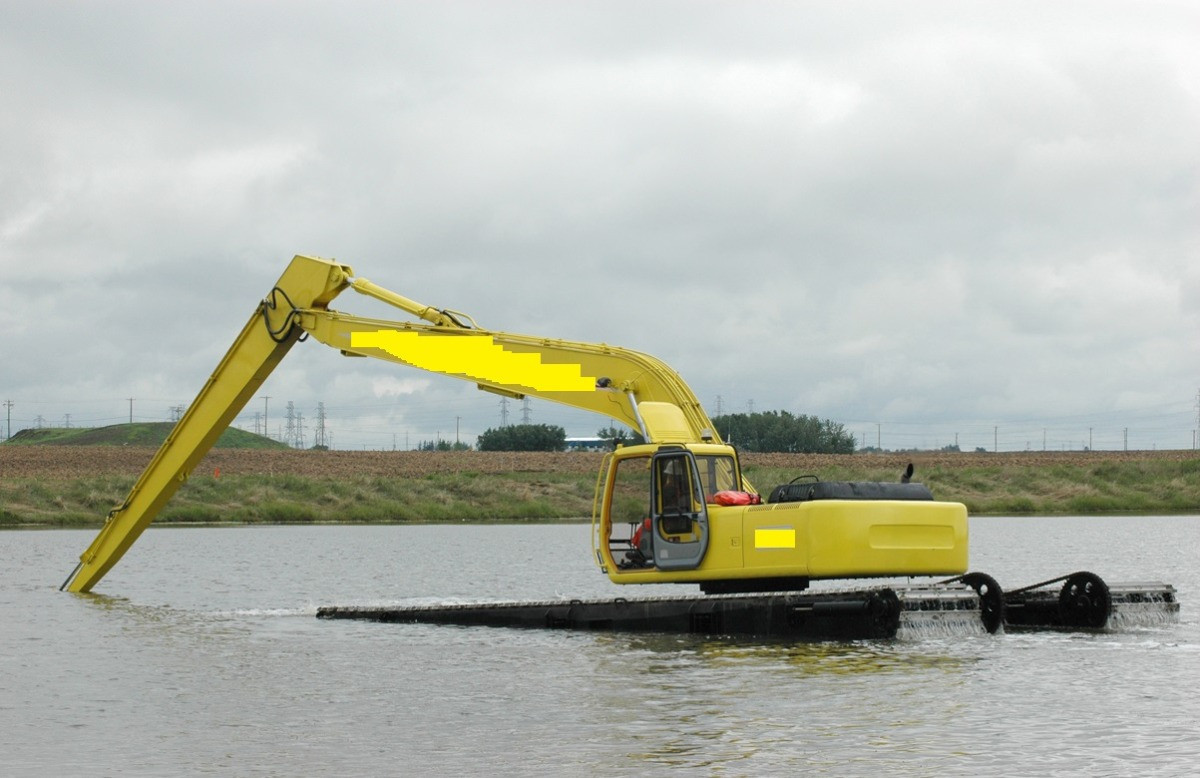
Does Amphibious Equipment Ever Get Stuck?
Does Amphibious Equipment Ever Get Stuck?
Amphibious equipment is specifically engineered to perform in environments that are typically inaccessible to standard heavy machinery. Designed for wetland, marsh, and soft-soil terrains, this equipment is built with features that enhance both buoyancy and mobility. One of the key aspects of amphibious equipment is its low ground pressure, achieved through wide track pads that distribute the weight evenly over soft or muddy surfaces. This design minimizes the risk of sinking and allows the equipment to move smoothly across unstable ground.
In addition to wide track pads, many amphibious machines are equipped with pontoons that offer extra flotation. These pontoons enable the equipment to traverse deep water or areas where the soil is too soft to provide any traction. The tracks are typically reinforced to handle both the stresses of land-based operation and the drag forces encountered in aquatic environments. By combining these elements, amphibious equipment offers unparalleled versatility for industries working in challenging conditions, such as construction, dredging, and environmental restoration.
Common Scenarios Where Amphibious Equipment Might Struggle
Despite the advanced engineering of amphibious equipment, there are certain extreme scenarios where it may still struggle. Understanding these situations can help operators take proactive measures to avoid potential issues. While rare, these conditions can arise due to environmental factors, improper use, or insufficient maintenance.
One common challenge involves operating in areas with exceptionally soft and deep mud. Although the wide tracks help distribute the machine’s weight, some wetlands or marshes have layers of mud that are so deep that even low ground pressure cannot prevent the equipment from sinking. In such cases, careful route planning and maneuvering are essential to avoid getting stuck. Another scenario involves poorly maintained equipment. Over time, wear and tear on key components, such as tracks and pontoons, can reduce performance. If these parts are not regularly inspected and replaced as needed, the risk of malfunction increases, which can lead to the machine becoming immobilized.
Lastly, amphibious equipment may struggle when transitioning from water to land, particularly on unstable slopes or steep embankments. Without proper technique, there is a risk of the equipment losing traction or becoming unbalanced. Operators must use caution and approach such transitions at the correct angle to ensure safe movement.
How to Minimize the Risk of Getting Stuck
1) Proper Operator Training: Even the best equipment can falter if it is not operated correctly. Proper training ensures that operators understand how to navigate difficult environments and avoid common pitfalls. Skilled operators can recognize potential hazards, such as deep mud pockets or unstable slopes, and adjust their techniques accordingly.
2) Regular Maintenance: Consistent maintenance is crucial to keeping amphibious equipment in optimal working condition. Tracks, pontoons, and hydraulic systems endure significant stress in wet and muddy environments, so they require frequent inspections. Operators should follow a maintenance checklist that includes checking for worn-out parts, inspecting seals for leaks, and lubricating key components. By adhering to a regular maintenance schedule, operators can prevent issues that might cause the equipment to become stuck or malfunction during operation.
3) Choosing the Right Equipment for the Job: Not all amphibious equipment is suitable for every type of wetland environment. Different jobs require different machinery, whether it's a smaller excavator for shallow marshes or a larger dredger for deeper waterways. Wetland Equipment provides a range of amphibious machinery tailored to specific tasks, ensuring that clients have the right tools to handle their unique challenges. Selecting the correct equipment greatly reduces the likelihood of encountering difficulties in the field.
How to Minimize the Risk of Getting Stuck
1) Choose the Right Terrain: Understanding the terrain before operating amphibious equipment is key to avoiding difficult situations. Operators should conduct a preliminary assessment of the work site to identify potential hazards such as unusually deep mud pits, soft vegetation-covered areas, or unstable embankments. In some cases, pre-clearing the area or creating temporary support surfaces with mats or other materials can make a significant difference in maintaining mobility. Knowing when to avoid certain areas and planning efficient routes can prevent unnecessary risks.
2) Use Auxiliary Tools for Support: Many operators choose to carry auxiliary tools such as winches, towlines, and anchors to assist in case the equipment gets stuck. These tools can help recover the machine without external assistance. For example, a winch can be used to pull the equipment out of a soft spot if it begins to sink. Additionally, external pontoons or flotation devices can be temporarily installed on certain models to improve buoyancy in particularly challenging environments.
3) Maintain Communication: When working in remote wetlands or marshlands, communication is essential. Operators should maintain constant contact with ground support teams who can assist in case of emergencies. Using radios or GPS trackers ensures that backup is readily available, minimizing downtime in case the equipment needs to be retrieved. Communication also helps in monitoring weather changes, which can rapidly affect terrain conditions and increase the risk of getting stuck.
What to Do If Amphibious Equipment Gets Stuck
1) Remain Calm and Assess the Situation: If amphibious equipment does get stuck, staying calm is critical. Operators should immediately stop any further movements that could worsen the situation. A quick assessment of the surroundings can help identify what caused the problem, such as overly soft mud, an obstruction, or a loss of traction on a slope. Understanding the specific issue will guide the recovery process.
2) Attempt a Controlled Recovery: Once the cause has been identified, operators can attempt to recover the equipment using built-in tools or external recovery gear. If the equipment is stuck due to loss of traction, gently reversing or pivoting may free it without causing additional damage. For deeper sinkage, deploying a winch or using a towline attached to a nearby anchor point or another vehicle may be necessary. Ensuring that any recovery action is done slowly and carefully reduces the risk of mechanical damage or equipment tipping.
3) Call for Professional Assistance if Necessary: If initial recovery attempts fail, professional help may be required. Trying to force the equipment out of a sticky situation without proper expertise can lead to severe damage or even operator injury. By contacting professionals, operators can ensure that the recovery is handled safely and efficiently. The most important thing to remember is that safety is key so that everyone can go home safely to those they love.
4) Learn from the Experience: Each recovery situation offers valuable lessons. Once the equipment has been safely retrieved, operators should evaluate what went wrong and adjust their practices accordingly. Whether it involves better route planning, additional training, or more frequent maintenance, applying these lessons helps prevent similar issues in future operations.
Wetland Equipment’s Commitment to Reliability
Wetland Equipment is dedicated to providing durable and highly reliable amphibious machinery designed to meet the toughest environmental challenges. Every piece of equipment undergoes rigorous testing to ensure that it can withstand extreme conditions, including deep mud, fluctuating water levels, and uneven terrains. This commitment to quality means operators can trust Wetland Equipment’s machines to perform consistently, even in the most demanding work environments.
Stuck in a Rut Due to Bad Equipment? Contact Wetland Equipment Today!
Whether you’re working in soft marshes, swamps, or waterlogged construction sites, having the right amphibious equipment can make all the difference. Wetland Equipment offers industry-leading machinery built to conquer the harshest conditions while reducing the risk of downtime. If you want dependable amphibious machines backed by expert support, get in touch with Wetland Equipment today, and let our dialed-in machines help you tackle every swamp challenge while minimizing risks of getting stuck!

